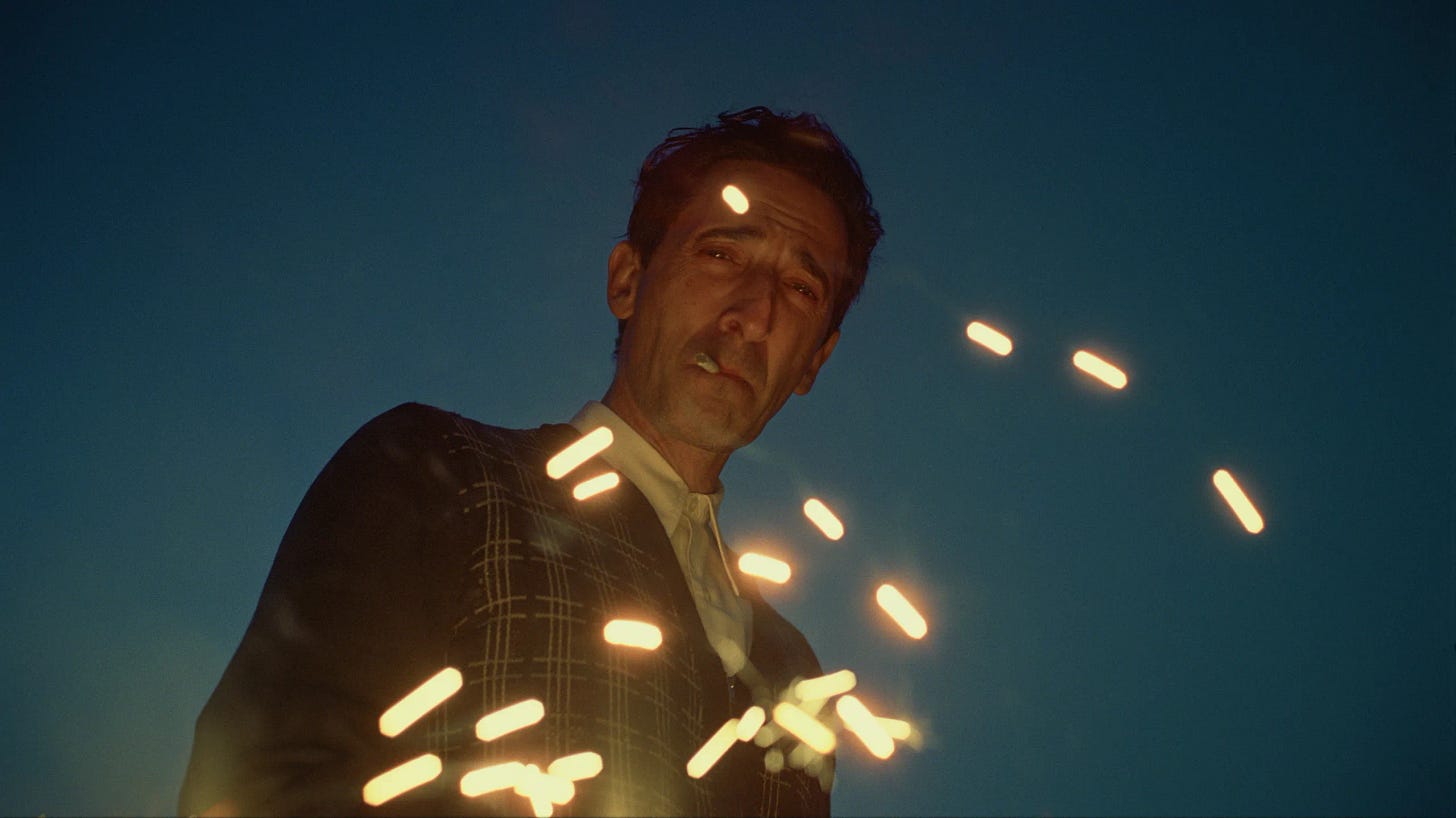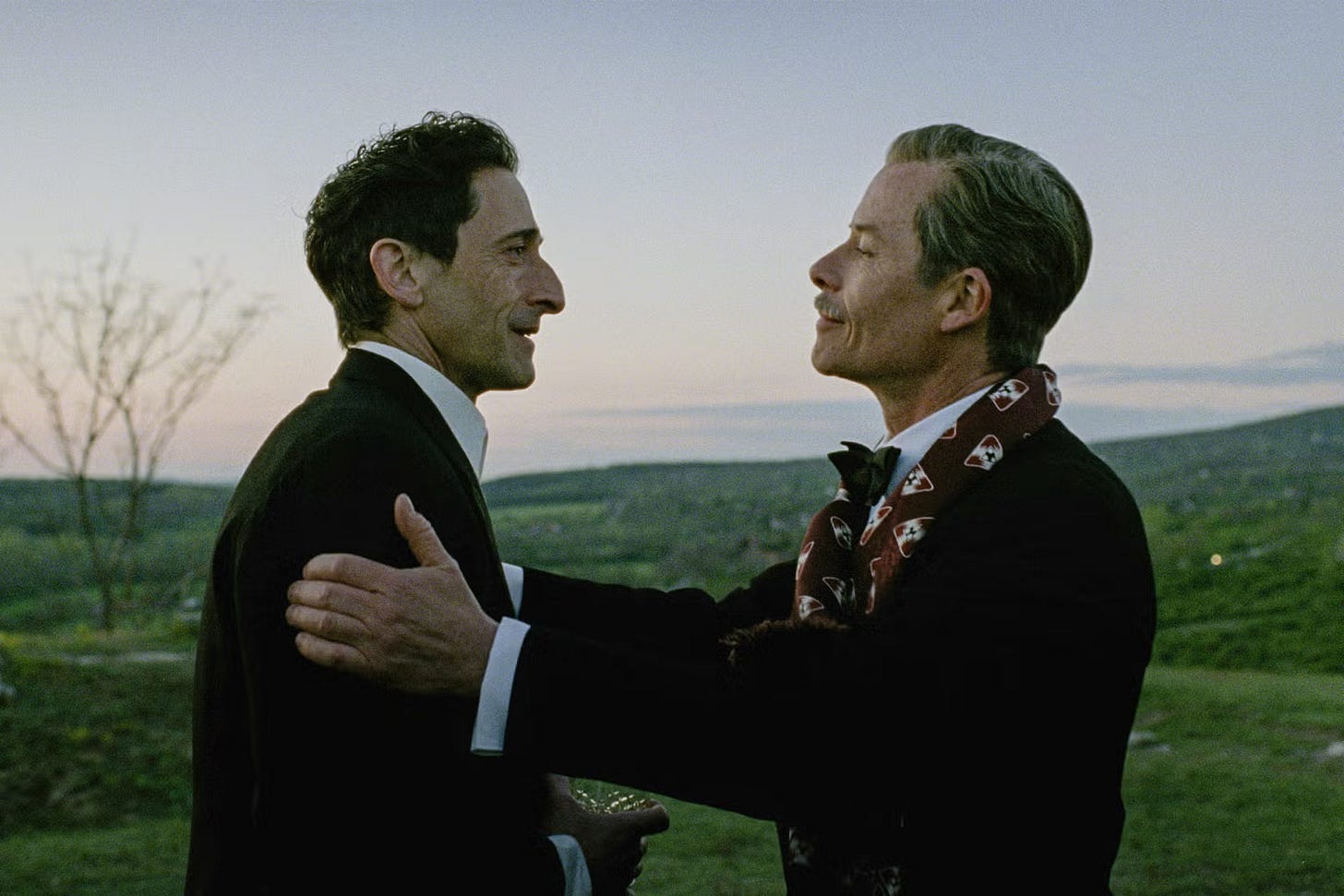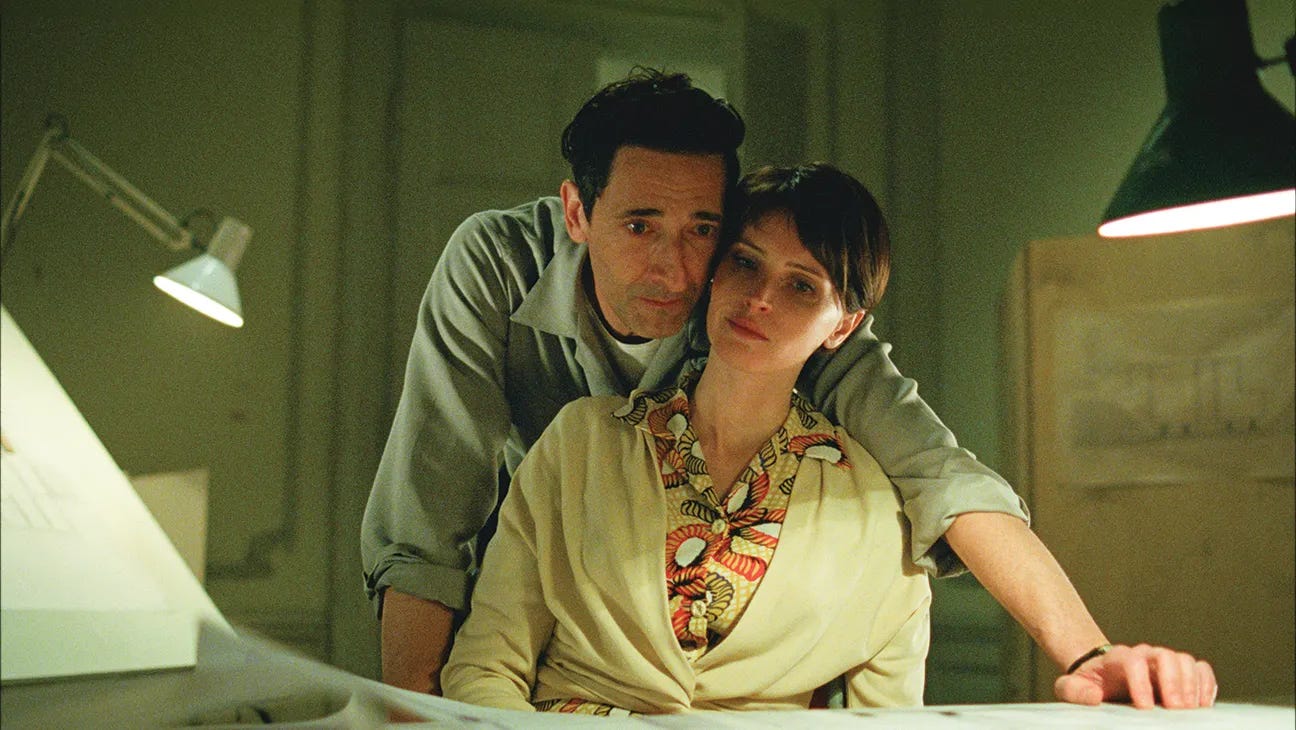Ah, there’s nothing like IMAX to remind you of the beauty of the human experience, more than city life ever could. Sure, I still long to sink my feet in the cold sand of Rajasthan’s dunes again, but for now, watching The Brutalist on that stupidly big screen is good enough.
Brady Corbet and Mona Fastvold & Co. pull off the incredible feat of making a movie that bites into some dreadful complexities without ever making the viewer avert their eyes. That in itself is an achievement for a film that’s
3 and a quarter hours (if we’re being generous),
made for a ridiculously low budget,
and shot on film and location for the most part,
regardless of what works and doesn’t.
It’s also fun and somewhat predictable to see architects dunking on the film for a number of reasons, outlined in this article. Some of them are valid, but others make about as much sense to me as Mexican Week on Bake Off. I don’t particularly care when it happens every so often with The Fountainhead, but in The Brutalist’s case, I’m a bit more forgiving.
The film’s core reads to me as the relationship between the innate human drive for creation and exploration against the spectrum of ways in which the world tends to co-opt it. In a pivotal scene of the film, Guy Pearce’s unimaginative Van Buren asks Adrien Brody’s László what inspires him to design such buildings. László answers by posing the question, “Is there a better description of a cube than its construction?”
This idea that our creations are only an exercise in making the intangible tangible in some way is provocative, to say the least. It’s tricky because such a narrow view can result in Larson’s uplifting tick, tick… Boom! or more of a literal, atmosphere-burning boom as bleakly prophesised by Nolan in Oppenheimer.
While we wait for a definitive answer to that question, it’s worth mulling over the way The Brutalist resolves this question. It frames one message through the character of Tóth’s niece Zsófia, who spells out the meaning of her uncle’s work as a way of processing the trauma of the Holocaust. This read of the film makes perfect sense if you only see the first and last minutes.
The 200-odd minutes in the middle though, tell a very different story — one of moral corruption, selfishness, greed, and spiritual decay. The first half of the film is about László’s introduction to the industrial behemoth of America in all its glory, perfectly visualized in a haunting frame of the Statue of Liberty shown upside down and then on its side.
László slowly goes through the utterly gorgeous American landscape, discovering the rot at its moral center rooted in the idea that a person is necessary enough to stay but not ‘Christian’ enough to live freely. It paints the immigrant experience against the imperialistically incentivized post-WW2 American society.
Van Buren, in the real standout performance of the film by Guy Pearce, represents the alluring and deceptive tide of capitalism — the enviously patronizing and then dominating nature of it. In such a world, László tries to carve out a space for himself on his terms, trying to retain his Hungarian-Jewish identity (in stark contrast to his cousin Attila), but only falls farther down the rabbit hole of cruel rejection and drug addiction.
Even as the second half of the film brings back a glimmer of hope in his life in the form of his wife Erzsébet, it’s full of different challenges. The film uses sex as the driving instrument of each character’s inner wants. Erzsébet wants to be loved by her László but he’s reluctant, instead choosing to focus on the pleasure he derives from his work. Van Buren’s rape of László in the primal caves of Italy’s mountainside is his base and perhaps only real method of asserting control over the people he sees as more than him.
Abuse is his way of keeping László, and by heavy implication, his son Harry (a strikingly nuanced performance by Joe Alwyn) under his thumb. The film breaks his hold over them only when Erzsébet, in a scene where Felicity Jones gets to shine, makes the intangible tangible by confronting Van Buren about his transgressions in front of his family.
This is the more generous read on how The Brutalist resolves the aforementioned question. The epilogue, in that case, becomes a redemption of László’s work and a recognition of his struggle and trauma, which then makes the film’s last moments even more muddling. There’s bound to be more interpretations that I look forward to reading. The film doesn’t seem to commit either way, which is probably the smarter choice.
Maybe there is no better description of the film than its existence.






